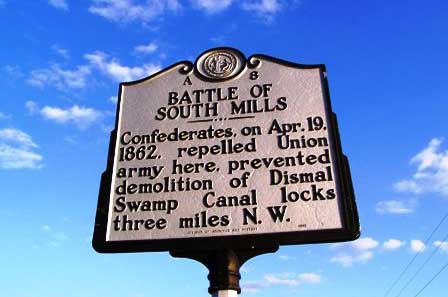Dismal Swamp Welcome Center
Dismal Day
Join the Dismal Swamp State Park for Dismal Day! Festivities run from 10 a.m. - 2 p.m. and include craft vendors, food, music, cultural exhibits, bounce house, wagon rides, scavenger hunt, and much more! A 5K Fun Run/Walk starts at 9 a.m. Call to pre-register or register the day of the event, starting at 8:30 am. Registration is free! Reserve your Dismal Day souvenir t-shirt, limited quantity available! This family friendly event welcomes strollers and allows participants to walk/run at their own pace. Do not miss this annual family festival celebrating history and nature!
Event Date:
October 21, 2023
8:30 am - Registration for the run
9:00 am - Run/Walk for fun starts
Followed by festivities of Dismal Day from 10:00 am to 2:00 pm
Location:
- Dismal Swamp State Park
- 2294 US 17 North
- South Mills, NC 27976
- (252) 771-6593
- (252) 771-8333
- This email address is being protected from spambots. You need JavaScript enabled to view it.
Website:
VisitCamdenCountyNC - Dismal Day

A Camden County View of Paddle for the Border 2016

19th Annual Paddle for the Border 2024!
In early spring hundreds of paddlers launch their vessels into the Dismal Swamp Canal’s dark, mirrored waters. This historic waterway serves as the backdrop for Paddle for the Border, an annual 7.5-mile paddling excursion to the North Carolina/Virginia border.
This annual event celebrates the canal’s rich history, which dates to 1763 when George Washington’s land company first surveyed the swamp before commissioning the waterway’s construction. In the 19th century, the canal’s dense wetlands provided refuge for slaves traveling the Underground Railroad before continuing their journey north.

The fee is $55 per person. After enjoying a pre-launch "grab-and-go" breakfast at the Dismal Swamp State Park, in South Mills, NC, paddlers embark on the leisurely three-hour journey to cross the state line. They finish the day out with a picnic lunch on grounds of the Dismal Swamp Canal Trail at the Great Dismal Swamp Boat Ramp at Ballahack Rd. in Chesapeake, VA.
Event Date: Saturday, May 4th, 2024
Registration Now Full!
For More Information:
- Paddle for the Border Brochure 2024
- Paddle for the Border FAQ
- VisitCamdenCountyNC
- Phone: 252-771-8333

The Dismal Swamp Canal opened to waterway traffic in 1805, and became a "prize of war" during the Civil War. In the early months of war, southerners used the canal to transport much-needed supplies. W.F. Lynch, Commander of the C.S.S. Sea Bird, a side-wheel steamer, received naval supplies via the canal when he was in charge of a tiny fleet defending Roanoke Island.
After Roanoke Island fell into Union hands on February 8, 1862, Lynch decided to take a position at Elizabeth City. However, on February 10, units of Admiral Goldsborough's fleet captured Elizabeth City and the Sea Bird was rammed and sunk by the U.S.S. Commodore Perry. Two other ships fled northward up the Pasquotank River to the Dismal Swamp Canal en-route to Norfolk. While C.S.S. Beaufort made it safely through the canal to Norfolk, C.S.S. Appomattox was two inches too wide to enter the locks. Rather than let his ship be captured by the enemy, the captain set it on fire.
Union forces did not attempt to capture control of the Dismal Swamp Canal until two months later. According to THE REBELLION RECORD, Editor Frank Moore, it was known that "Rebel entrenchments and batteries to protect the canal had been installed at South Mills." Also,this was the time of the "ironclads," with the battle between the Monitor and the Merrimack at Hampton Roads on March 9, 1862.
Word reached General Burnside, who had established a position in New Bern, that Confederates were building ironclads in Norfolk and intended to bring them south through the Dismal Swamp and Currituck Canals. Therefore, General Burnside ordered General J.L. Reno to move troops to South Mills and blow up the locks there, then proceed to the Currituck Canal and destroy its banks. General Reno moved his command of 3,000 men from Roanoke Island on April 17 and transported them by water to Elizabeth City. From there, they marched north to South Mills, accompanied by three wagons loaded with explosive materials to be used on the locks. After marching all night long, Reno's men encountered the Third Georgia Regiment, commanded by Colonel A.R. Wright, about three miles below the locks at the edge of the woods at the north end of Sawyers Lane.
On April 19th for five hours the 750 defenders withstood all Union assaults. Running low on ammunition, Wright withdrew his troops to a new position about a mile away. Unaccustomed to the oppressive heat, the Union forces did not pursue and, in fact, rapidly withdrew back to their boats, leaving their dead and wounded behind and the Canal intact. Despite claims to the contrary, The Battle of South Mills was a failure for Federal Troops because their mission was not accomplished even though the smaller Confederate army retreated.
Soon afterward, however, Norfolk surrendered on May 10, 1862, and Union troops transported goods on the Canal. In a "Letter from the Secretary of the Treasury in reference to the interests of the Government in the Dismal Swamp Canal," Leroy G. Edwards, Collector of the Tolls for the Dismal Swamp Canal Company, testified: "In the latter part of the summer of 1862, the U.S. forces took possession of the work. They gave us much trouble... Goods were carried through under military permits. I asked payment of tolls, which were refused." During this time, a sizable number of Confederate sympathizers and deserted soldiers were in hiding boats.
Official Army records document on December 5th, 1863, Brigadier General Edward A. Wild led forces were by "some unaccountable blunder... sent astray through the wrong canal," and did not catch up with General Wild until he arrived at Elizabeth City. Rebels eluded this expedition in the vastness of the swamp. All settlements discovered on this march were burned and confiscated, innocent men were hanged and women were taken as hostages. North Carolina Governor Zebulon B. Vance referred to General Wild's actions as a "disgrace to the manhood of the age. Not being able to capture soldiers, they war upon defenseless women. Great God! What an outrage." The Union forces returned to Norfolk on December 24th, leaving a trail of destruction behind them.
Following the surrender at Appomattox on April 9, 1865, the Canal was returned to its owners in a deplorable condition.
For more information about the Battle of South Mills Driving Tour in Camden County visit the Camden County Heritage Museum & VisitCamdenCountyNC. Download the Battle of the South Mills Brochure below:

The Underground Railroad was at its height between 1810 and 1850 with over 30,000 people escaping enslavement, mainly to Canada, via the network. The U.S. Census figures only account for 6,000. The Great Dismal Swamp was a known route for runaway slaves. This route was the most rugged and treacherous route where insects, snakes and wild animals were abundant. Moses Grandy, a slave, was born in Camden County in 1786. Moses tried three times to buy his freedom. He was an industrious man who worked hard and was respected by all, even those who had taken his money and denied his freedom.
In the nineteenth century, the Great Dismal Swamp was a morass of huge trees towering over dense underbrush and delicate ferns, inhabited by black bears, wildcats, wild cattle, hogs, and poisonous snakes. It was to this inhospitable place many slaves came. The foreboding swamp provided a natural refuge for runaways. Following the American Revolution, there were numerous instances of slave resistance. While some runaways were able to blend in with free blacks, many chose to seek refuge among a colony of runaways (called maroons) in the Great Dismal Swamp. The very nature of the swamp made it possible for a large colony to establish a permanent refuge. It was difficult to capture a slave once they reached the swamp although occasional forays were made into the swamp to recapture runaways with specially trained dogs. Colonies were established on high ground in the swamp where slaves build crude huts. Family life evolved, and the abundant animal life provided food and clothing. Some earned money by working for free black shingle makers, who hired the maroons to cut logs, playing them with small amounts of food, money or precious clothing. Sometimes runaways were betrayed by the Negro lumbermen. Renegade fugitives often raided nearby towns or preyed upon travelers along the stage road. Others stole from boats anchored along the canal. These violent rebels were a dreaded menace to the whole swamp community. Slave disturbances in the early 1800's caused much alarm among residents living near the swamp. Tidewater Virginia residents were greatly concerned about reported unrest among slaves in nearby Camden, Elizabeth City and Currituck County, North Carolina. In the spring of 1823, the situation was so serious a large militia force with dogs was sent to wipe out the colony of slaves in the swamp. Even though some were captured or killed, most of the maroons escaped. A brutal slave uprising in 1831 resulted in the butchering of 13 men, 18 women, and 24 children in Courtland, Virginia. Following the Southampton County slave rebellion, it was feared that many of the insurgents planned to flee to the swamp. The leader of the rebellion was Nat Turner, a powerful Baptist preacher with a large loyal following, who remained at large for several months, causing speculation he was hiding in the swamp. Expeditions searched for him, capturing a number of maroons. Nat Turner was eventually caught. While returning from a trip to England in 1842 Henry Wadsworth Longfellow composed his poem "THE SLAVE IN DISMAL SWAMP", telling of the miserable plight of a Negro in hiding. In 1856, David Strother wrote a description of the swamp's beauty and fearsome natives for Harper's magazine. As an artist, he sketched the legendary Osman, who, according to legend, protected the Negro slave Escapees. Harriet Beecher Stowe used this sketch by Strother as the main character in her novel, DRED: A TALE OF THE GREAT DISMAL SWAMP.
For more information about African American Heritage in Camden County, visit the Camden County Heritage Museum, Dismal Swamp State Park, Dismal Swamp Welcome Center.
Download and read the African American Heritage Brochure below:
 Hours of Operation
Hours of Operation
State Park Visitor's Center 8am - 4:30pm daily
March - October: 8am - 5:30pm (Gate closes at 6pm)
November - February: 8am - 4:30pm (Gate closes at 5pm)
The Dismal Swamp State Park visitor's center has something for everyone. Here, visitors can learn the natural and cultural history of the swamp.
 Canoe, kayak and bike rentals available at a nominal fee. Over 20 miles of hiking and biking trails, half mile boardwalk, interpretive signage, and Ranger led programs offer numerous ways to explore the park. Special events include seasonal wagon rides, Paddle for the Border and Dismal Day.
Canoe, kayak and bike rentals available at a nominal fee. Over 20 miles of hiking and biking trails, half mile boardwalk, interpretive signage, and Ranger led programs offer numerous ways to explore the park. Special events include seasonal wagon rides, Paddle for the Border and Dismal Day.
Visit NCparks.gov to see what the Dismal Swamp State Park offers.
